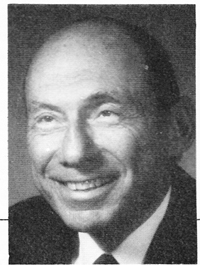THE EDITOR'S CORNER
Treatment Rationale: Scientifically Based or Anecdotal? and Progress Reports
Treatment Rationale: Scientifically Based or Anecdotal?
Orthodontists have evolved a complex system of diagnosis and treatment planning, most often based upon cephalometric measurements and growth predictions that have been developed through clinical research. Knowledge of normal and abnormal growth has been gleaned by years of growth studies, utilizing statistical methods. Most cephalometric treatment plans have long-term data available to assess the efficacy of the techniques used.
Almost 95% of orthodontists are university trained. Their formal education includes a program of theoretical mechanics, followed by treatment of clinical patients in consultation with instructors who are frequently part-time teachers, part-time clinicians. The mechanics are based upon histologic and biologic information gained from studies of bone reactions to biomechanical forces. All in all, the orthodontist receives an education in clinical treatment based upon sound science.
It would seem unlikely that an orthodontist with such an educational background would be easily misled by those teaching postgraduate courses with concepts based on little or no scientific documentation. It would also seem unlikely that anecdotal case presentation would satisfy the inquiring mind, or that one would accept such information without questioning it, and apply it immediately in his practice. However, such courses are being given, and few questions are being asked concerning a scientific basis.
Currently, a popular topic is diagnosis and treatment of TMJ disorders. One may attend numerous courses and hear very little about studies conducted by the lecturer. Some references may be made to the literature, but misquotes often occur and results are frequently misinterpreted, unintentionally or otherwise. At times, treatment modalities that border on mysticism are advocated, with little more than historical anecdotal documentation.
Above all, we should remain open to new ideas and treatments. However, in studying new concepts we must recall our roots as trained professionals. We should question undocumented concepts, inquire about study design, and require some statistical evidence prior to following the professed concepts of a charismatic leader.
There is no doubt that clinical experience is of value. However, there is a great difference between reporting a thousand cases treated with a particular technique and reporting the same thousand cases with sound measurement data concerning the specific criteria for determining success or failure. The latter method requires one to analyze and approach the hypothesis scientifically.
A plethora of two- and three-day programs is advertised in the dental literature. Everyone should continue his clinical and academic education, but only with discrimination and careful evaluation of course content. EHW
Progress Reports
A majority of orthodontists do not give patients and parents progress reports, and this is a mistake. A chief complaint of parents about their Zorthodontic experience is a failure of the practice to communicate their children's progress in treatment. At least as important is the value that progress reports have in motivating patients and in keeping the sequence of treatment on schedule, so that the case can be completed reasonably close to the estimated treatment time. These two are related, and there is some logic to planning a schedule of progress reports to serve both ends.
Many orthodontists who do offer progress reports do so at stated calendar intervals such as every six months or every year. It is far more advantageous to plan progress reports to coincide with key accomplishments in the sequence of treatment. The treatment card can be marked in advance to call attention to those future appointment dates by which time certain key tooth movements are expected to occur--for example, bite opening, molars Class I, cuspids Class I, retract anteriors, torque, etc. When each date arrives, the mark on the card calls for a progress review to see if that movement has occurred. If it has, this is an opportunity to praise patients for the accomplishment and reinforce their dedication. Such short-term goals are motivational for patients, parents, and staff, and what better time for a progress report than at the time of the progress review?
A practice that does not evaluate patients' progress pays a heavy penalty in cases that are not completed on schedule. I estimate that more than 50% of the cases in the average practice are not being completed on time, and that this may be adding more than 25% to the total treatment time of the active cases in the practice. If so, there are many cases for which payment has been completed, but whose treatment remains to be completed. This is costly in two ways. It adds to the office overhead because it requires additional space, equipment, personnel, supplies, utilities, and administration. In addition, the practice is being shortchanged if the fees have been determined on the basis of the shorter treatment estimate.
Every practice would benefit from installing a treatment flow control system and monitoring it with progress reports to coincide with the sequence of steps in treatment. ELG



